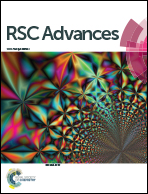Microencapsulation: an emerging technique in the modern coating industry
Abstract
The protection of a metal from corrosion is a topic of great interest, for which a variety of methods has been implemented in the past such as organic–inorganic protective coatings, the use of corrosion inhibitors, sol–gel coatings, self healing coatings etc. Out of these, self healing coating is an emerging and broad field that is categorised into three types; namely, microencapsulation, vascular based and intrinsic materials. Microencapsulation is an advanced and well established technique for corrosion protection of metals but still has not received adequate attention from industries to date. The main purpose of encapsulation is to control the release of active agent, when an external condition such as mechanical stress or energy triggers the microcapsules to break, rupture or melt. Along with corrosion inhibition, microencapsulation can be used to enhance other performance properties of coatings such as mechanical strength, impermeability, aesthetic appearance, UV resistance etc. Considering these advantages and the need for microencapsulation, in the present article we discuss the principles and morphologies of microcapsules, the purpose of microencapsulation, physical and chemical techniques of microencapsulation, healing mechanisms, applications and the latest developments in microencapsulation for the coating industry.


 Please wait while we load your content...
Please wait while we load your content...